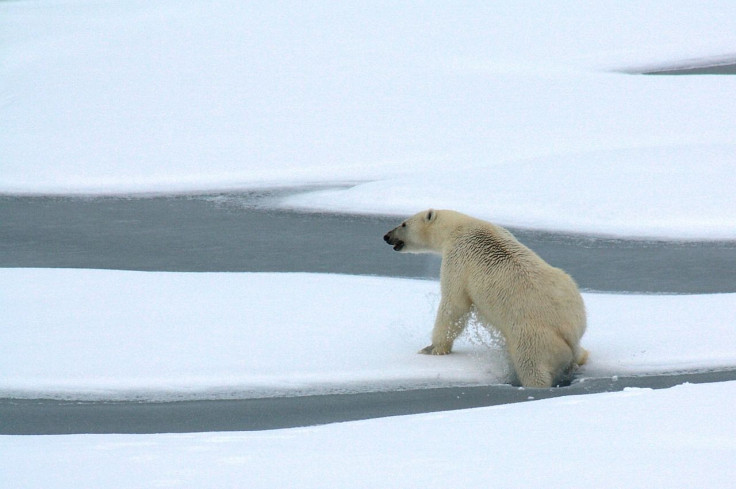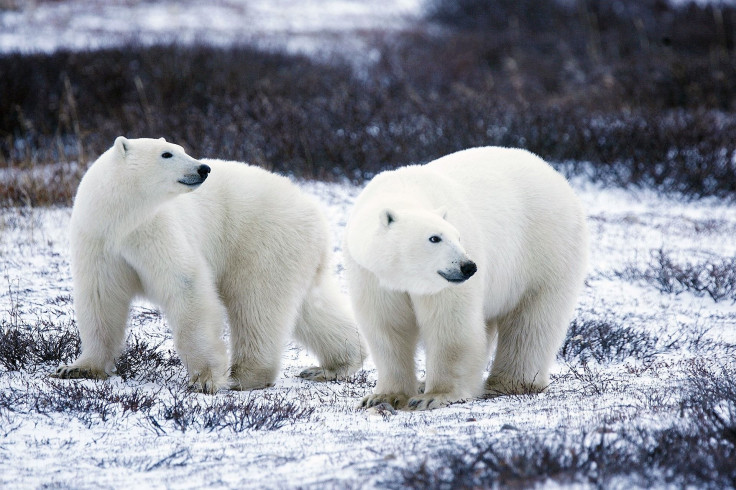Will Hungry Polar Bears Attack More People As The Arctic Sea Ice Melts?

Humans might see more attacks from polar bears as the Arctic environment changes, because these bears may turn to preying on people as their food sources dwindle.
With trends of Arctic ice melting and polar bear habitats shrinking amid climate changes, researchers collected and analyzed data of polar bear attacks on humans to predict how the bears may behave under stress. In their study in the journal Wildlife Society Bulletin, the scientists looked to confirm when and where attacks took place and to understand the circumstances around the attacks.
Read: Did Climate Change in the Arctic Cancel This Climate Change Research Trip?
Polar bears generally feed on marine mammals and, as they live in such remote places, did not come into much contact with humans, apart from some contact with indigenous tribes, until maritime exploration heavily expanded in the late 1500s and later people started hunting polar bears. Still, “reported attacks have been extremely rare,” according to the study.
In fact, the average has been fewer than one per year for decades. In the five places with wild polar bear ranges — the coasts and frozen waters of the U.S., Norway, Russia, Greenland and northern Canada — there were just 73 confirmed attacks between 1870 and 2014. Of those attacked, 20 people died and 63 were injured.
“Understanding causes of polar bear attacks on humans is critical to ensuring both human safety and polar bear conservation,” the study says. The most frequent culprit was a “nutritionally stressed adult male.”
When females were involved, most of the time they were defending their babies. But all of the single females and the majority of the males were acting as predators during their attacks — they were hungry and crossed paths with a person.
“All polar bears depend on sea ice for fundamental aspects of their life history, including access to their primary prey, ice seals,” according to the study. “Arctic sea ice extent and thickness have declined over the last 4 decades.”
With less sea ice floating around during shorter portions of the year, a hungry polar bear that encounters a human might see a meal. You can see this trend even in the research data, as the years 2010 to 2014 saw the greatest number of polar bear attacks in the study period — which were 20 percent of the total attacks reported — while at the same time seeing the biggest changes to the Arctic habitat. There has been another change in attack trends as well: While previously attacks have been spread pretty evenly throughout the months of the year, during the last couple of decades the large majority of attacks have come between July and December, when sea ice is at its lowest.
It’s not just the loss of sea ice that is an issue when it comes to a changing Arctic environment. Researchers have also noted that it is getting more difficult for polar bears to hunt because the winds up north are changing, and the bears rely on the winds to hunt seals. The wind carries the scent of a seal to a polar bear and the bears walk perpendicular to the flowing air to maximize what prey they can smell upwind. But Arctic winds have been getting stronger. And when the wind is too strong, the polar bears can’t use it in this way.
Read: What Ice Age Fossils Teach Us About Climate Today
The researchers called for more communication of “bear safety messages” and about ways to avoid conflict, especially in light of the fact that the dwindling sea ice is causing bears to spend more time on land, bringing them more frequently into closer contact with humans.
“It’s a perfect storm of conditions,” biologist Geoff York, one of the study’s authors, told the Alaska Dispatch News.
Although it’s possible that the uptick in polar bear attacks in recent years was a fluke, only time will tell.
“We’ll see if that was just a one-off, maybe a couple of bad ice years in a row,” York said.

© Copyright IBTimes 2025. All rights reserved.





















